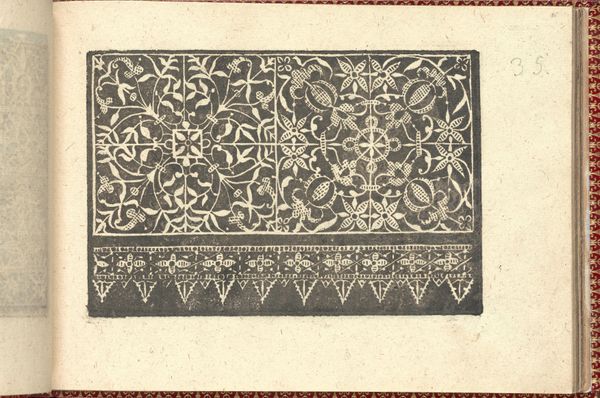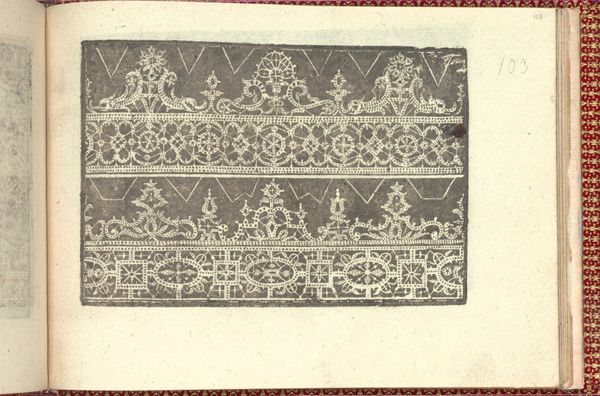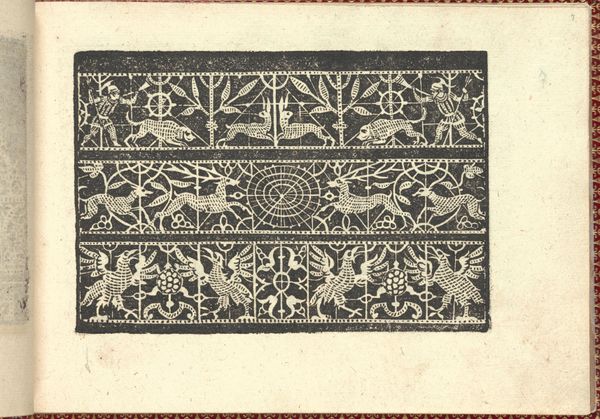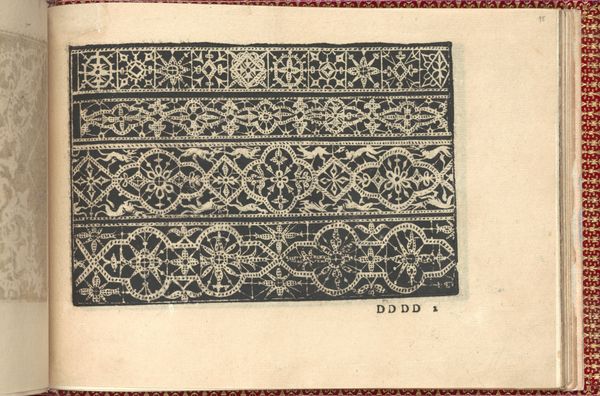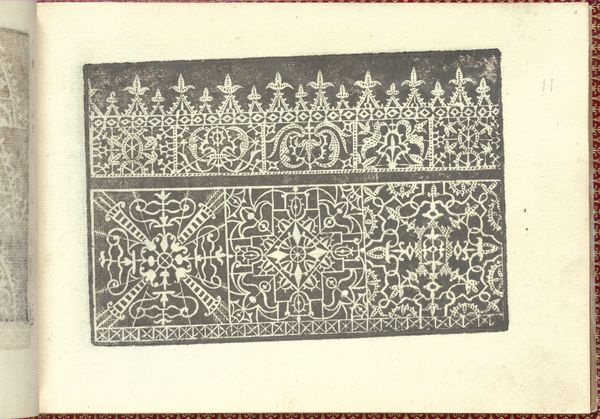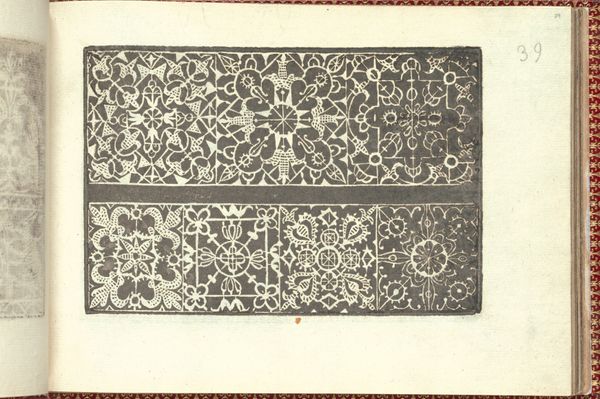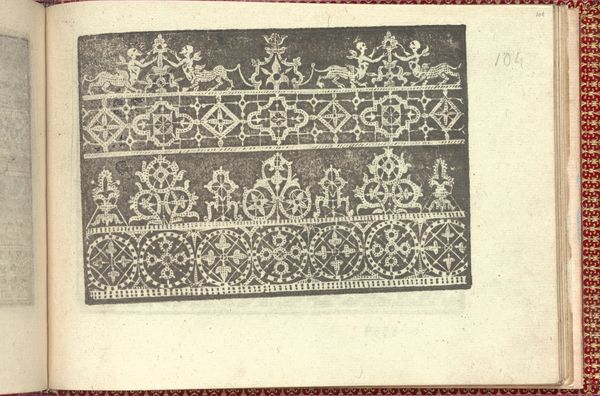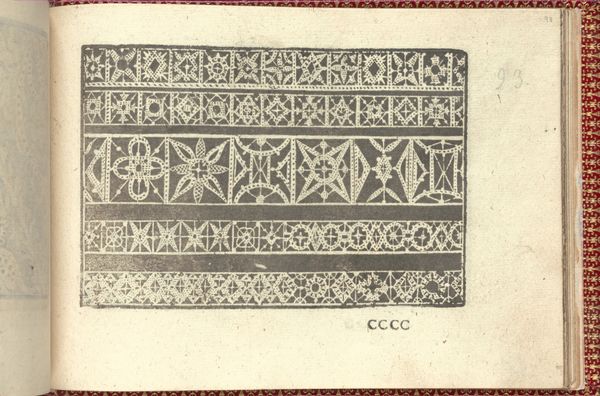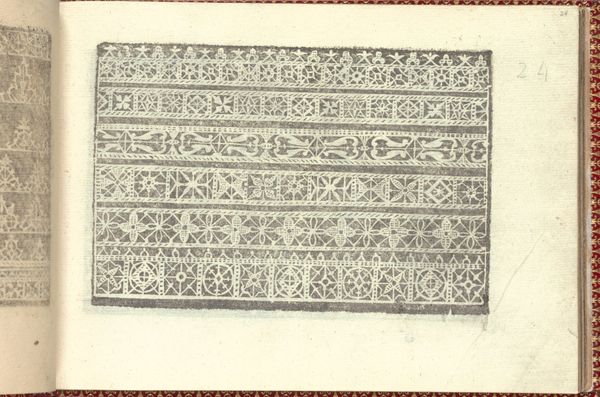
Corona delle Nobili et Virtuose Donne: Libro I-IV, page 36 (recto) 1601
0:00
0:00
drawing, ornament, print
#
drawing
#
aged paper
#
ornament
# print
#
book
#
old engraving style
#
sketch book
#
hand drawn type
#
11_renaissance
#
personal sketchbook
#
hand-drawn typeface
#
ink colored
#
men
#
pen work
#
sketchbook drawing
#
italy
#
sketchbook art
Dimensions: Overall: 5 1/2 x 7 11/16 in. (14 x 19.5 cm)
Copyright: Public Domain
Curator: This intriguing image is a page from Cesare Vecellio’s "Corona delle Nobili et Virtuose Donne," printed in 1601. The work, held at the Metropolitan Museum of Art, displays a compilation of ornamental patterns. What are your first thoughts? Editor: It has an intense sense of crafted precision, but also feels quite… constricting. All those repeated shapes and the stark black ink give it a rather formal feeling, don’t you think? It almost looks like a pattern designed for surveillance rather than celebration! Curator: That's a fascinating observation. "Corona delle Nobili et Virtuose Donne" translates to "Crown of Noble and Virtuous Women." It was actually an important reference for lacemakers and other artisans. We need to consider the book’s context, functioning in a period that valued highly stylized pattern work and ornament in attire and interior design. Editor: So, we are looking at designs intended to be used by female artisans? But look closer, the repeating patterns are full of patriarchal imagery. In the middle register there are the busts of emperors and rulers embedded among floral and geometric design work. Is there any attention being paid to who has control over the mode of artistic expression and creation here? Curator: Your emphasis is insightful. While meant as source material for female artists, Vecellio’s work still operated within the constraints of the artistic and social structures of the time. While ostensibly aimed at assisting "virtuous women," it subtly reinforces societal hierarchies through embedded imagery and a rather severe design style. The politics of representation is definitely a part of understanding the artistic agency that's visible. Editor: Exactly. And, by appreciating its historical impact while acknowledging its embedded social narratives, we begin to ask crucial questions about the ongoing negotiation and contestation for art’s future directions. It speaks volumes about whose vision directs and impacts the narrative. Curator: Absolutely. Analyzing historical works allows us a means for critically interpreting our modern world of image production, consumption, and creative possibilities.
Comments
No comments
Be the first to comment and join the conversation on the ultimate creative platform.
